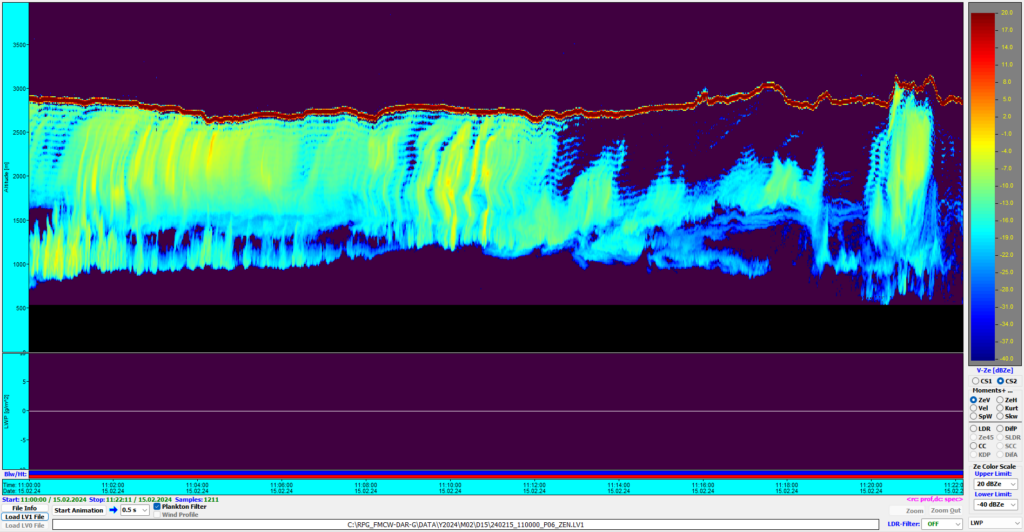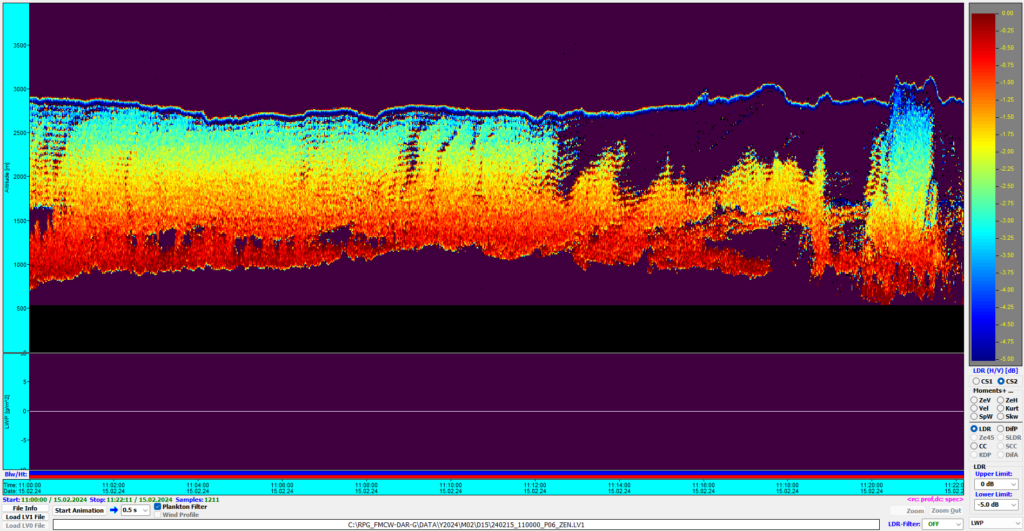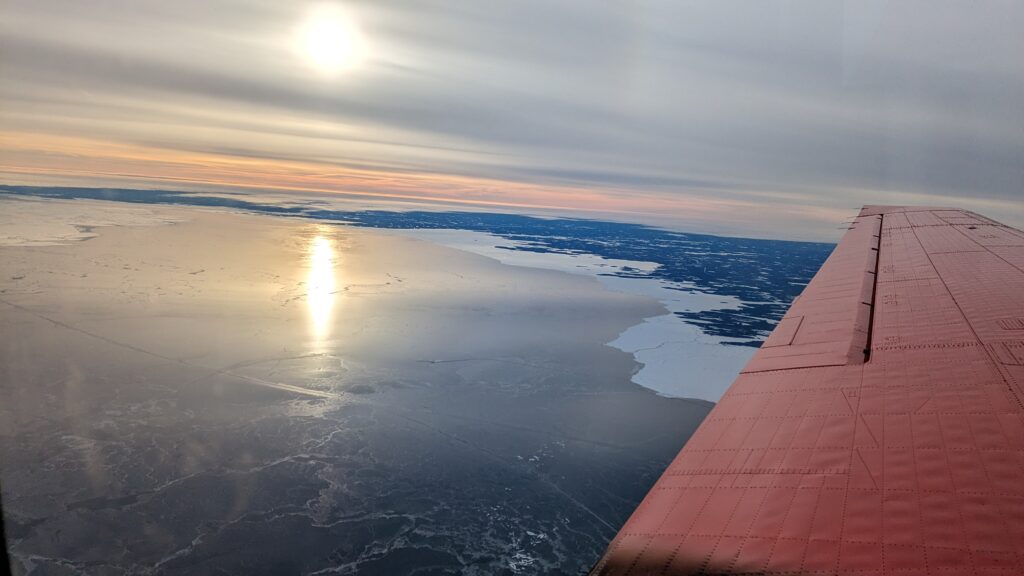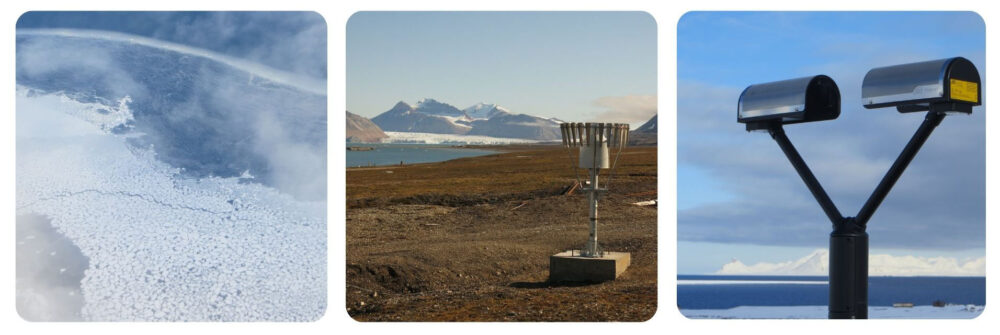Today’s research flight was a repetition of RF01 cruising down the Gulf of Bothnia from its northern end down South till we reach the cloud decks that usually form over the open ocean. This year’s ice extension is quite large and it takes us more than one hour to get there. Since the models did not forecast any clouds over the ice in the bay, we planned to use this section for sea ice emissivity measurements. But in contrast to the forecast we could see low clouds covering the ice surface, giving us the chance to see how the new radar performs on these.
Very thin clouds lying on the ground could not be seen, neither by the G- nor by the W-band radar. But very interestingly, the surface return and the patterns of ghost images changed as soon as clouds were in the beam width.
Cruising along the bay we reached thicker clouds organized in several layers. Between the layers, seeder-feeder effects could be seen in the radars as well as DAR signals of up to 7 dB. All in all another very successful flight with a lot of knowledge on our new GRaWAC radar.



